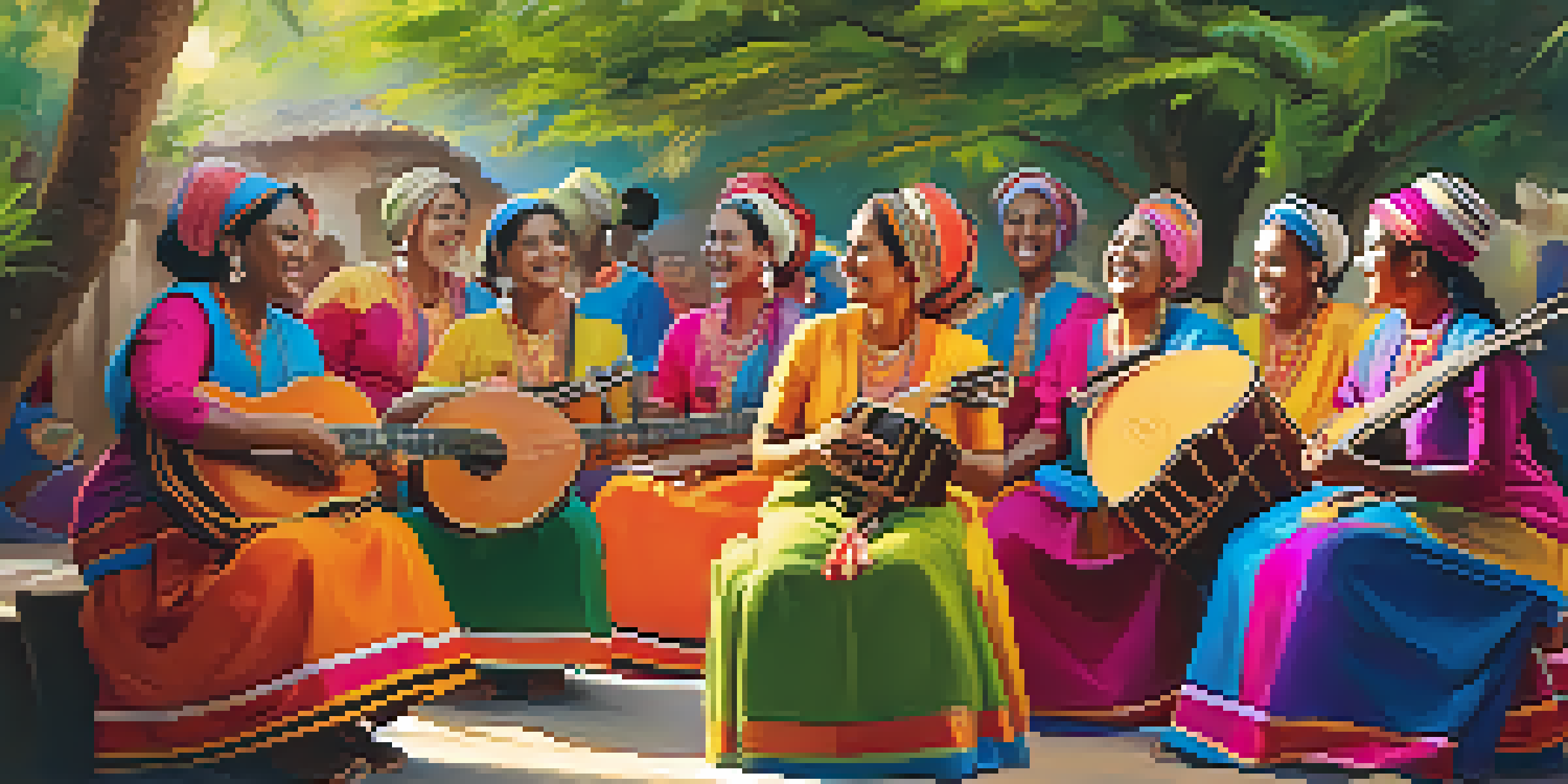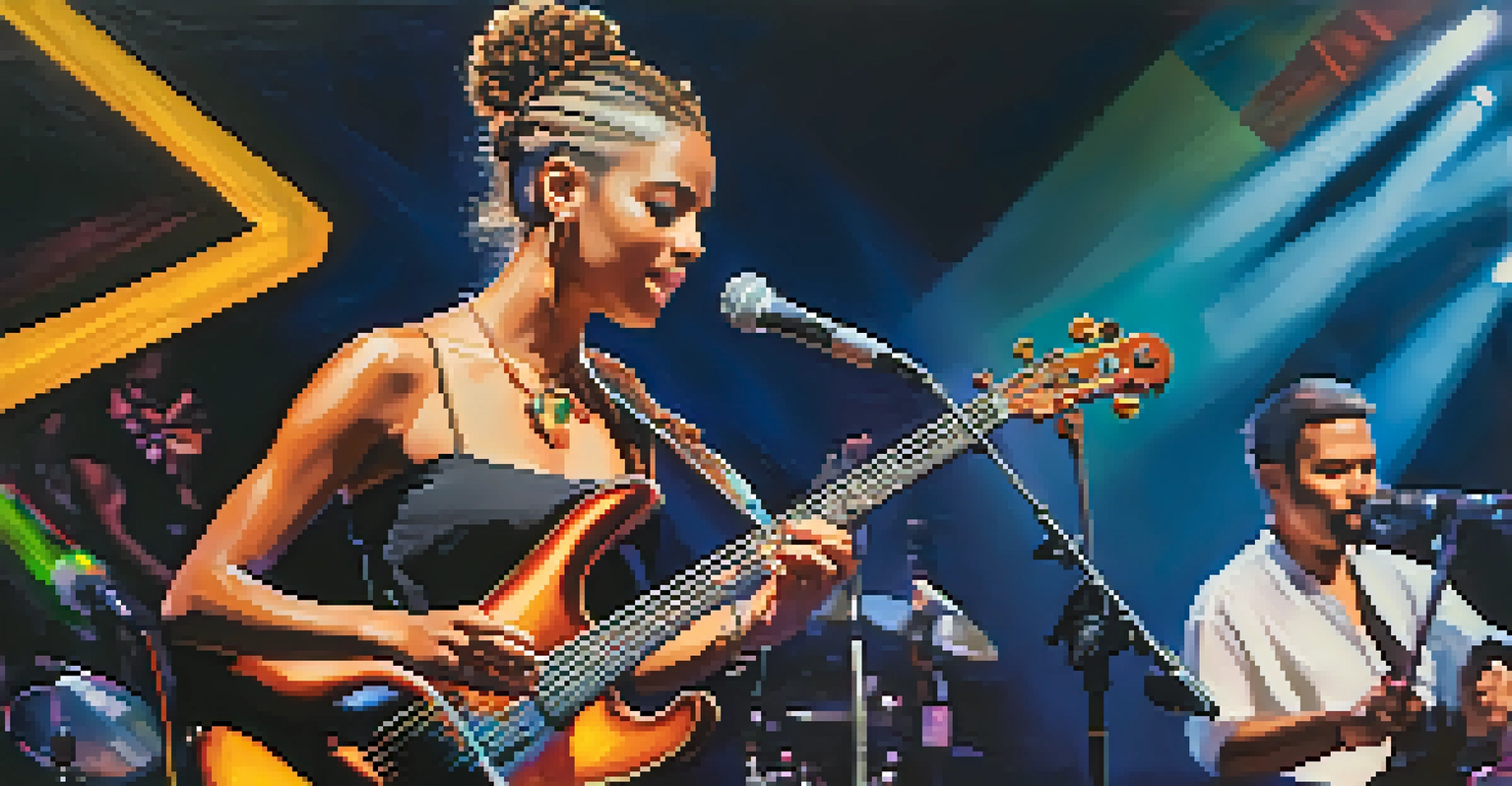The Role of Women in Traditional Music Around the World

Women as Custodians of Cultural Heritage
In many cultures, women are the heart and soul of traditional music. They often serve as the custodians of songs that carry the stories and traditions of their communities. For instance, in the Appalachian region of the United States, women have kept the old ballads alive, passing them down through generations.
The power of women in music is not just in their ability to create, but in their capacity to inspire and preserve the cultural narratives of their communities.
These songs are rich with history, often reflecting the struggles and celebrations of the community. By performing and teaching these songs, women help ensure that their cultural heritage is not lost to time. This role is not just about preservation; it's also about identity and pride.
As guardians of cultural narratives, women’s contributions to traditional music reflect their deep connection to their roots. Their voices not only resonate in music but also in the stories that shape their communities.
Performance and Leadership Roles in Music
Traditionally, women have taken on significant roles in music performance, often spearheading community gatherings and celebrations. In many African cultures, women lead dances and songs that are crucial during rites of passage, showcasing their leadership skills. This not only highlights their talents but also empowers them within their communities.

For example, in the Gamelan ensembles of Indonesia, female musicians play essential roles, often performing pieces that tell stories of resilience and strength. Their presence in these ensembles challenges stereotypes and paves the way for future generations of female musicians.
Women Preserve Cultural Heritage
Women play a crucial role in safeguarding traditional music, keeping the stories and values of their communities alive.
Moreover, these performances foster community bonds, as music brings people together. Women’s leadership in these settings reinforces their status as key figures in cultural traditions.
Songwriting and Composition by Women
Women have always been integral to the songwriting process in traditional music, often crafting lyrics that speak to their experiences and challenges. In the folk traditions of Ireland, for instance, female songwriters have penned powerful ballads that reflect social issues and personal stories, giving voice to the unspoken.
Music is the universal language of mankind, and women are vital in ensuring that its messages resonate across generations.
By composing songs that resonate with their communities, women create a platform for dialogue and reflection. This act of songwriting becomes a powerful means of self-expression and cultural commentary, allowing them to shape narratives within their traditions.
As they share their compositions, these women inspire others to explore their creativity and challenge societal norms, demonstrating the transformative power of music.
Women’s Role in Preserving Oral Traditions
Oral traditions are vital to the survival of many cultures, and women often play a key role in this preservation. Through storytelling, singing, and teaching, they keep the music and its meanings alive. For instance, Indigenous women in North America have long been the keepers of traditional songs that narrate their people's history and values.
These oral traditions are not merely artistic expressions; they are educational tools that impart knowledge and wisdom to younger generations. Women use music as a medium to pass down important life lessons, cultural values, and historical narratives.
Leadership in Music Performance
In many cultures, women lead musical performances, showcasing their talents and strengthening community bonds.
Their efforts ensure that these traditions continue to thrive, bridging the gap between past and present. In this way, women become essential links in the chain of cultural continuity.
Challenges Faced by Women in Traditional Music
Despite their vital roles, women in traditional music often face numerous challenges, including gender discrimination and limited opportunities. In many cultures, societal norms may discourage women from performing or taking leadership roles in music, which can stifle their creativity and expression.
For example, in some Middle Eastern cultures, women may be restricted from performing in public spaces, limiting their ability to showcase their talents. Such barriers not only affect individual artists but also impact the cultural richness of their communities.
However, women continue to push against these constraints, finding ways to share their music and stories. Their resilience in the face of adversity is a testament to their passion and commitment to their art.
Modern Influences and Innovations by Women
In the contemporary music scene, women are blending traditional sounds with modern influences, creating innovative genres that resonate with new audiences. This fusion often brings traditional music into fresh contexts, allowing it to evolve while maintaining its core essence. For example, artists like Rhiannon Giddens are reviving folk traditions by incorporating elements of jazz and blues.
This innovation not only showcases the versatility of traditional music but also highlights the creativity of women as they navigate and reshape musical landscapes. By embracing technology and modern platforms, these artists reach wider audiences, amplifying their voices and stories.
Innovating with Traditional Sounds
Women are blending traditional music with modern influences, creating innovative genres that resonate with contemporary audiences.
Through their work, women are redefining what it means to be a traditional musician, proving that innovation and tradition can coexist beautifully.
The Future of Women in Traditional Music
Looking ahead, the role of women in traditional music seems poised for growth and transformation. As more women take center stage, we can expect to see an increase in diverse voices and perspectives within the genre. This shift is crucial, as it enriches the musical tapestry of cultures around the world.
With the rise of social media and streaming platforms, female artists can share their music more widely and connect with global audiences. This connectivity fosters collaboration and inspires new interpretations of traditional songs, ensuring that these art forms remain relevant.

As we celebrate the contributions of women in traditional music, we also anticipate a future where their influence continues to flourish, shaping the soundscapes of tomorrow.